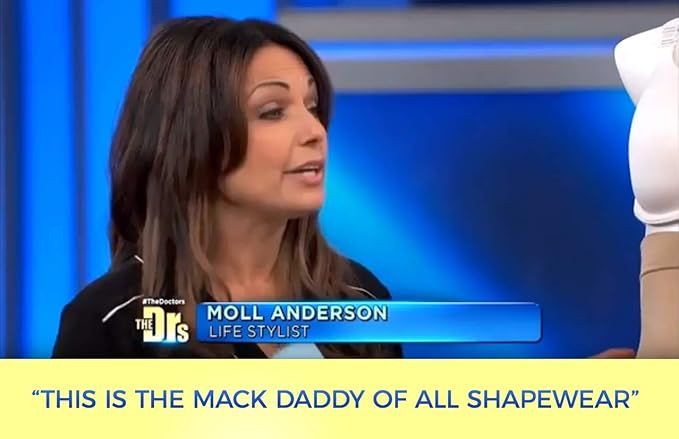Shapewear and Television: How TV Shapes Our Perception of the Perfect Silhouette

Television has long been a mirror of societal trends and ideals, influencing everything from fashion to body image. One silent star in this narrative is shapewear, a transformative accessory that has helped actors and personalities achieve the flawless silhouettes we see on screen. Through decades of programming, shapewear has played a pivotal role in shaping not just bodies but cultural perceptions of beauty.
The Early Days of TV: The Golden Hourglass
When television became a household staple in the 1950s, shapewear was already a wardrobe essential. Actresses like Lucille Ball in I Love Lucy and Elizabeth Taylor in various TV appearances embodied the era’s curvaceous ideal. Girdles, corsets, and structured bras were staples of costume design, creating the hourglass figure that audiences adored. These garments enhanced natural curves while ensuring every outfit looked immaculate under the scrutiny of the camera.
Shapewear wasn’t just about aesthetics—it was a reflection of mid-century ideals, emphasizing femininity and poise. Costume designers often credited these garments with creating the iconic looks of the era’s most beloved characters.
The 1960s and 70s: A Shift Toward Freedom
As cultural movements like feminism and counterculture gained momentum, the rigid shapewear of the past began to loosen its grip. On-screen fashion started to embrace natural silhouettes. Shows like The Mary Tyler Moore Show showcased women in more relaxed, body-skimming clothing, reflecting a shift away from the hyper-structured undergarments of previous decades.
While shapewear didn’t disappear, it became subtler. Lightweight girdles and control-top hosiery became the go-to options for smoothing rather than sculpting. This more understated approach aligned with the growing desire for personal freedom and self-expression.
The 1980s: Power Dressing and Control
The 1980s brought the era of power dressing, and television was a key platform for its promotion. Shows like Dynasty and Dallas highlighted strong, confident women in bold shoulder pads and cinched waists. Shapewear regained prominence as actresses relied on it to achieve sleek, polished looks that complemented their power suits.
The era also marked advancements in shapewear materials. Lycra and spandex became popular, offering greater flexibility and comfort while maintaining control. This evolution allowed for a more natural yet enhanced appearance, perfect for the glamorous close-ups that defined TV drama.
The 1990s and 2000s: Subtlety and the Influence of Reality TV
With the rise of sitcoms and reality TV in the 1990s and early 2000s, shapewear became less about dramatic transformation and more about subtle enhancement. Shows like Friends and Sex and the City showcased women in figure-hugging fashions, often with the help of invisible shapewear.
Reality TV added another layer to the narrative. Stars like the Kardashians popularized shapewear as a tool for achieving the hourglass figures showcased in their glamorous on-screen lives. This visibility helped destigmatize shapewear, transforming it from a secret weapon to a celebrated accessory.
Modern TV: Inclusivity and Empowerment
Today, TV continues to influence shapewear trends, but the narrative has shifted toward inclusivity and body positivity. Series like Euphoria and Shrill highlight diverse body types, celebrating beauty in all forms. Shapewear brands like Skims, endorsed by stars such as Kim Kardashian, frequently appear in television content, emphasizing comfort, inclusivity, and self-expression.
Shapewear is no longer confined to “slimming” roles but has become a part of the story itself. Documentaries, talk shows, and even commercials discuss it openly, framing it as a tool for confidence rather than conformity. Television, with its reach and impact, continues to normalize shapewear as a versatile and empowering part of modern fashion.
Shapewear’s Starring Role
From the glamorous costumes of classic sitcoms to the body-positive messages of today’s streaming series, shapewear has been an integral part of television’s aesthetic evolution. It has not only shaped the on-screen bodies we admire but also the societal standards of beauty and self-presentation.
As TV narratives evolve, so too does the role of shapewear, reflecting our changing views on style, self-expression, and individuality. Today, it stands as both a functional garment and a cultural artifact, a testament to how television and fashion continue to shape one another.